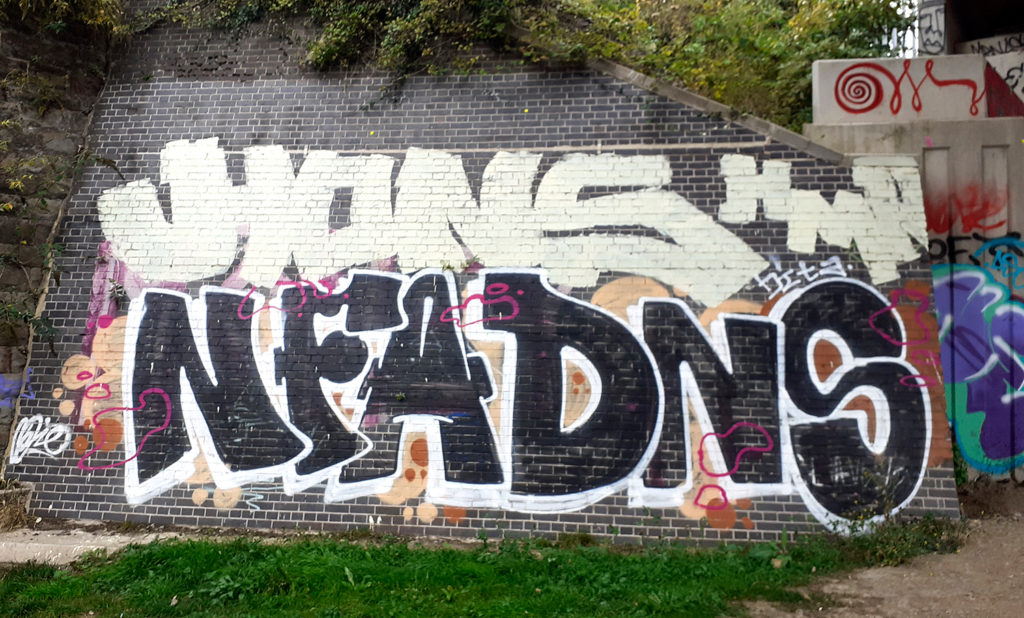
We’ve all seen someone’s house, a public building or our favourite mural, defaced with tagging. It’s generally agreed to be a problem that Bristol suffers from worse than many cities and, undoubtedly, in many cases it’s a a spontaneous expression made without consideration of the property being painted – often on the way home from the pub. But if you accept the common, purely negative, narrative, you’re missing a big part of the culture of graffiti and street art.
Almost every lauded street/graffiti artist started out tagging, and given the space to practice (provided in the past by Bristol legend John Nation), and a culture of refining the lettering, and building up skills and aesthetics. If you look closely, you can often see that taggers have a decent amount of calligraphic skill- a specific aspect of tagging and painting throwies (quickly thrown up pieces) is the skill of painting the whole thing (or the outline) in one continuous motion. I’ve heard established writers say Bristol’s current style is almost entirely down to the lack of officially sanctioned legal painting spots, and so the necessity for speed, and the ability of doing a one-take piece, take precedence over developing skills that require time and space to apply.
For this post I’m not going to go into the aesthetics or skills involved in tagging (although each could be an essay in itself), but do something which many people demonising taggers fail to do – look at the content and motivations.
There is a skill in reading graffiti, but many tags are easy to read, and the names people choose are an insight into their thoughts and motivations. I’m hearing many of these explanations second and third hand, but some are obvious.
Some common tags you will see around Bristol include Debt, Wrong and Broke, but some more obscure tags which come from a similar place include NFA and ADNS (sometimes combined, as illustrated). Many people might realise that NFA means No Fixed Abode (a bureaucratic name for homelessness), and I’ve been told that ADNS stands for Always Drunk Never Sober, suggesting a nihalistic outlook on the world. An explanation I’ve heard of the DBK tag (which anyone paying attention will have seen around Bristol for decades) is Dirty Bristol Kids- another example of taking ownership of a slur.
Although many of the acronyms used are explained differently every time, that these outpourings of nihilism and feelings of ostracism, rejection and dissatisfaction with modern life and society are expressed so frequently, is indicative of the deeper problems many feel with how we live.
Many of the taggers people dismiss as mindless vandals are, at least in their own minds, hardcore anti-gentrification activists so when the cars and expensive houses in the more gentrified areas around Stokes Croft, St Pauls and Easton are targeted, this dissatisfaction and alienation becomes focussed on what is seen as the root of their problems. Given the ongoing wave of gentrification pushing everyone I know further and further from the city centre, I have more than a little sympathy.
If you can empathise with the above point of view, then you might see that writing your (purposely chosen) name across the walls of a city which you find alienating, or even actively objectionable, in its championing of money over compassion, is itself, an act of rebellion and reclamation of space. Maybe it’s destructive by most measures, but at least it’s taking an active interest in the city rather than disengaging and retreating into private spaces – a much more common reaction to an environment dominated by indifference or outright hostility to the people with the least.
It’s not all negativity either. Look out for wit, joy, compassion, and More Love…
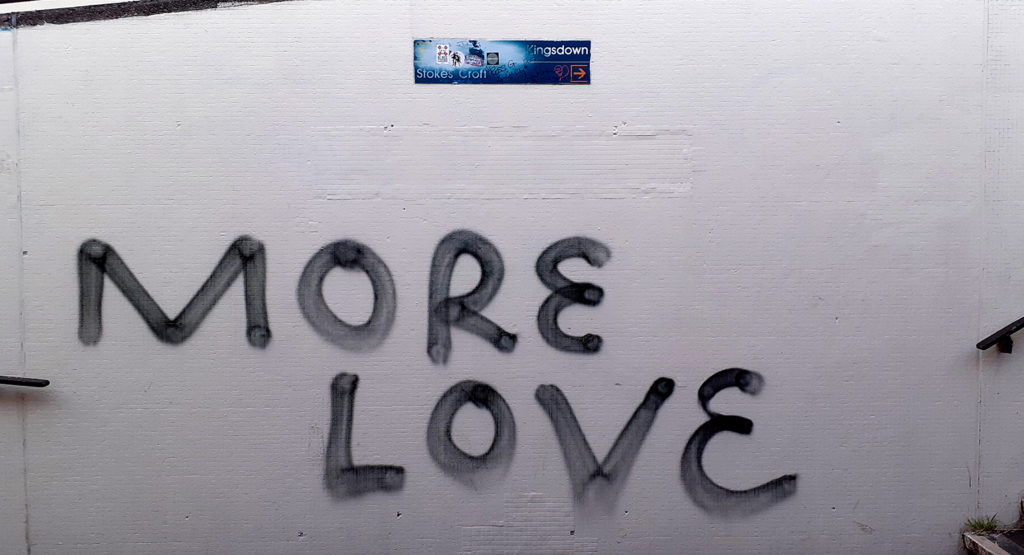

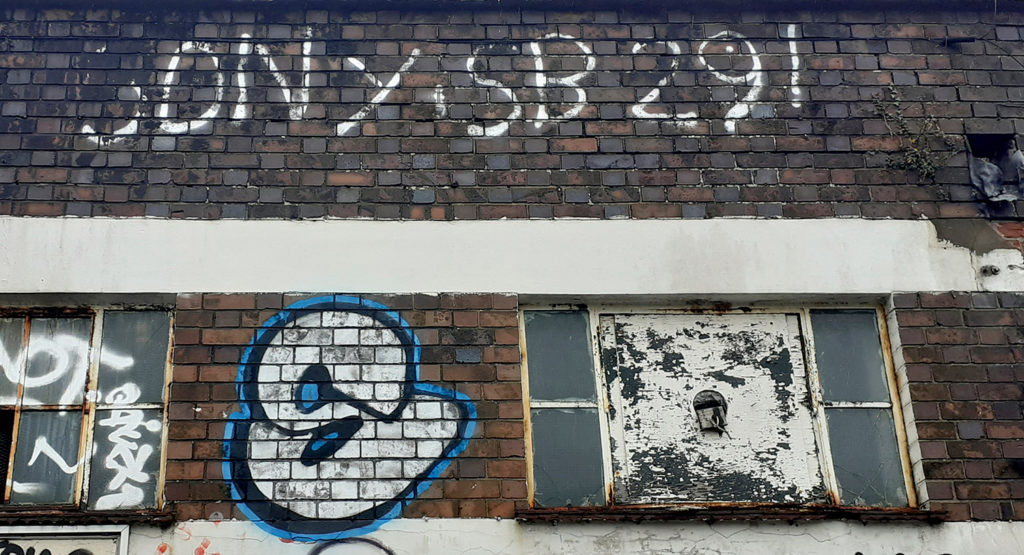
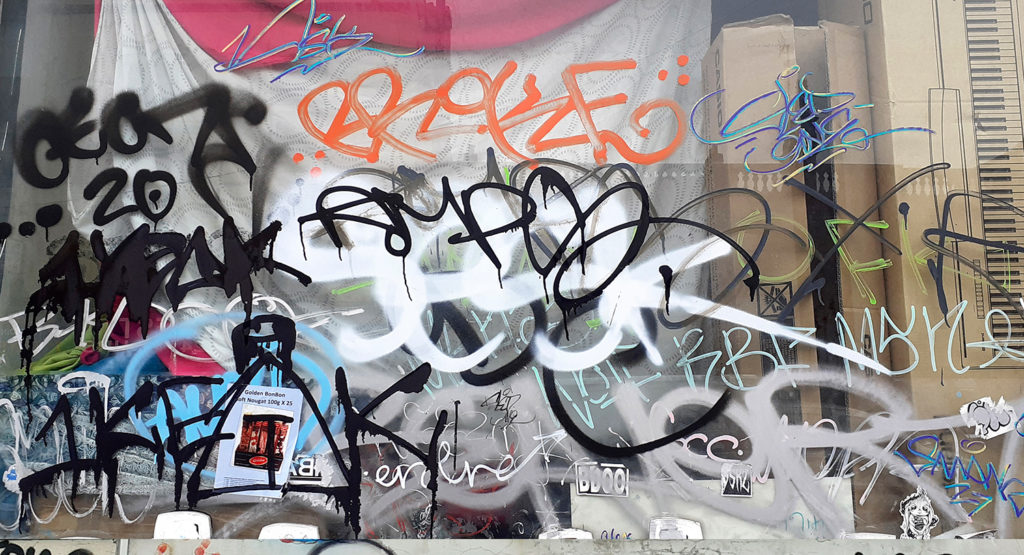

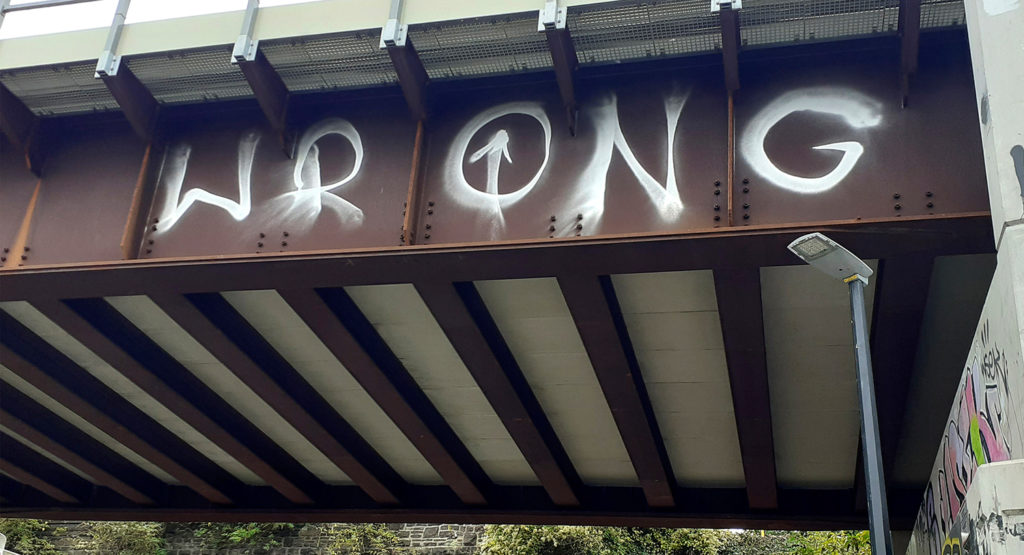
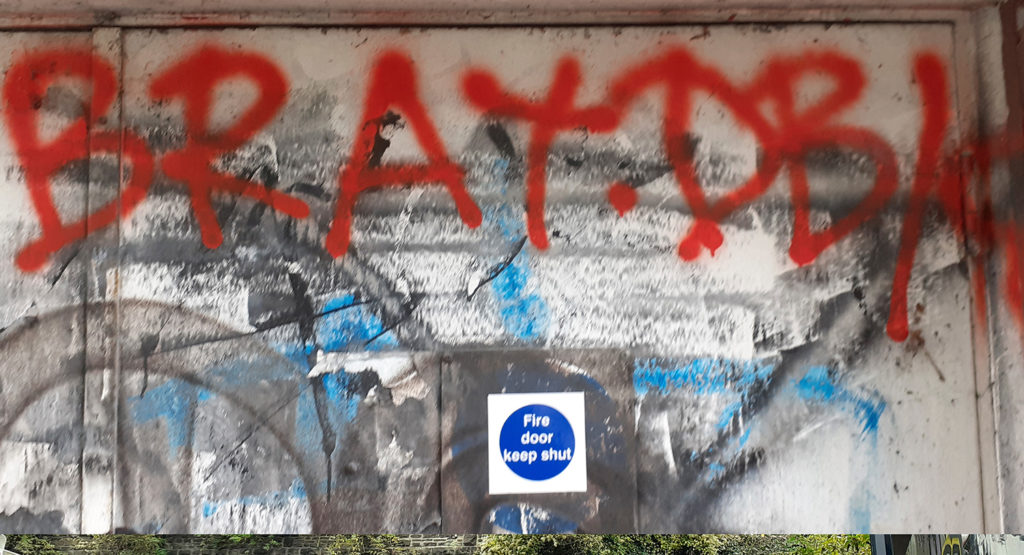
Well said. You opened my eyes to a good many points. Thanks. Esapecailly the translations!
Like any sub-culture, there’s a whole lot of depth to this world, which I’m mostly oblivious to as well really. Just a few peeks through friend’s eyes 🙂
What utter tripe. The author is talking bollocks There is no skill in taging. It looks crap and ugly. I am really into street art and creative graffiti. If I was a judge and a tagger was put before me I would sentance them to art college and tell them to create something decent.
Hey Joke, obviously some tags and taggers aren’t really interested in developing skills and just want to see their name everywhere (or maybe they’re more interested in the associated skills of climbing, or running from cops & security), but there are undeniable skills involved in may, even if you don’t approve of the results. Being able to do one continuous outline, controlling the line thickness, and adding flares by changing the angle of the can etc is certainly a consumate skill. People spend hours practicing over and over before taking their tags out on the streets. It sounds like you’re actively ignoring the skills involved bacause you don’t like the result. Or maybe you just call any tags which are beautifully executed graffiti, and so can keep the categoties seperate in your mind? )Many people do something similar with the graffiti/street-art categories.)
Tagging’s about being UP as well as handstyles. Social psychology may be able to offer elegant theories as to why it happens, but the sheer satisfaction of being seen and recognised by as wide a circle of your peers as possible, is the main motivation.
As for the aesthetics, well, most handstyles are perfectly executed and are fantastic to behold; making them as visually pleasing as the best pieces—and way preferable to the bland ‘pop art’ of ‘acceptable’ Street Art (yes, there is a graffiti hierarchy in the popular mind).
Society needs creative outlets gnawing around its edges (social psychology?), so long may it continue.
Yeah, getting up and seen is really fun! And I’m all up for more aesthetic diverity! The way ideas of tidynes, neatness and respectability are used to crush aesthetic differences really upsets me. Not just in graff and on the streets, but everywhere. It is a key part of the consumer lifestyle, and suppression of the working class/lumpen too- that everything you own has to look new and shiny, otherwise you should chuck it and get a new one, and you obviously don’t care for yourself (or something. The thought processes behind it baffle me).
Precisely right about the crushing of aesthetic differences: how taggers and piecers are considering ‘yobs’ and some sort of existential threat to society screams (and the phrase is apposite) hysteria and propriety assertions. ‘How dare someone’s value judgements differ to my—usually banal and unimaginative—value judgements’.
An individual and/or crew being up all-city/all country is seen as threatening and beyond the bounds of society’s careful delineations. Despite there being no threat to anyone (unless you’re a bridge, subway or telecommunications box), the emotive language (gangs, yobs, vandals, menaces) that rules the narrative, makes it highly improbable you’d be able to convince most people of graf’s essentially benign purpose.
Anyway, big respect to all those holding the pen and can and getting themselves up—whatever town/city you’re at.
👍👍👍